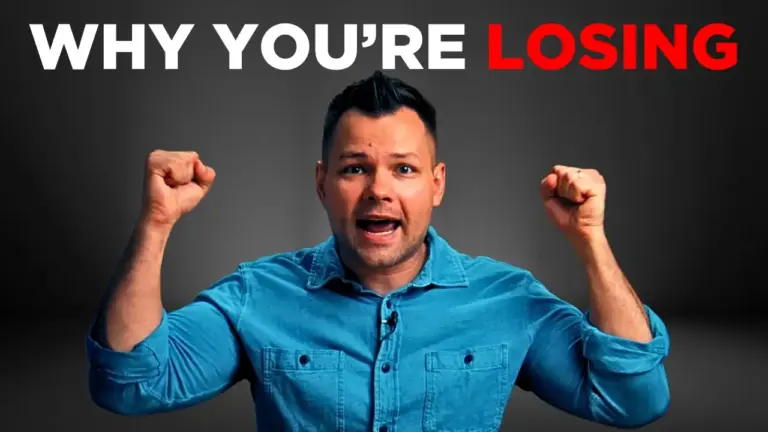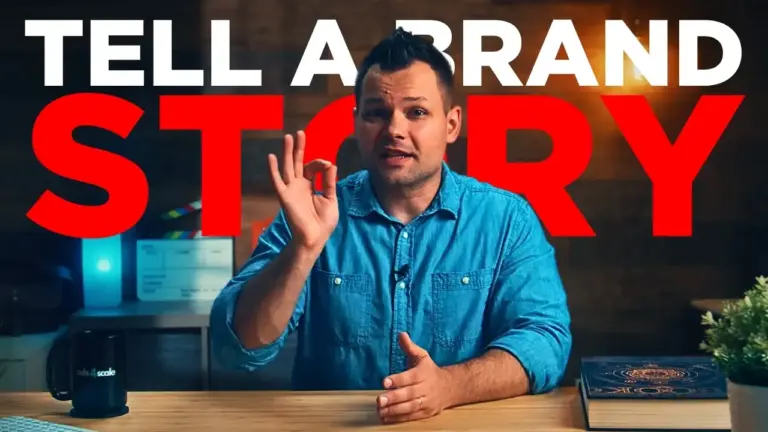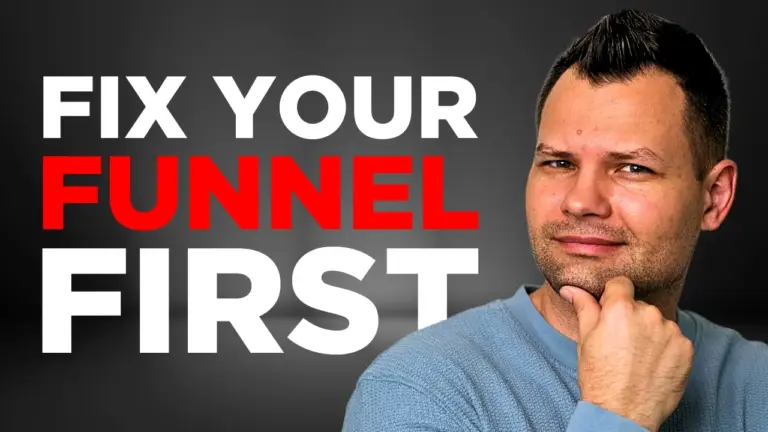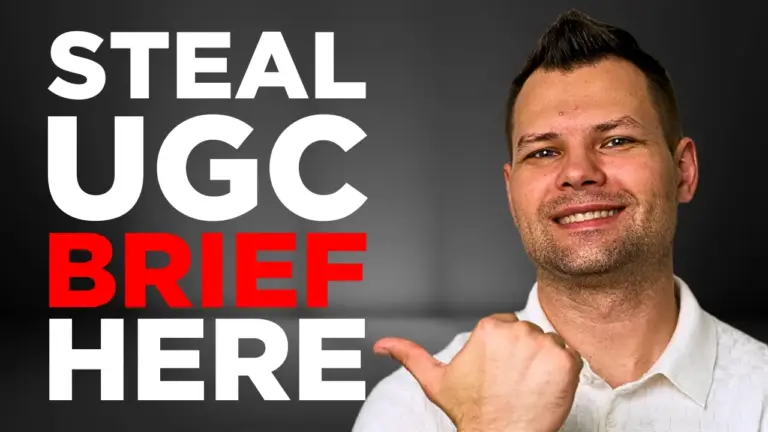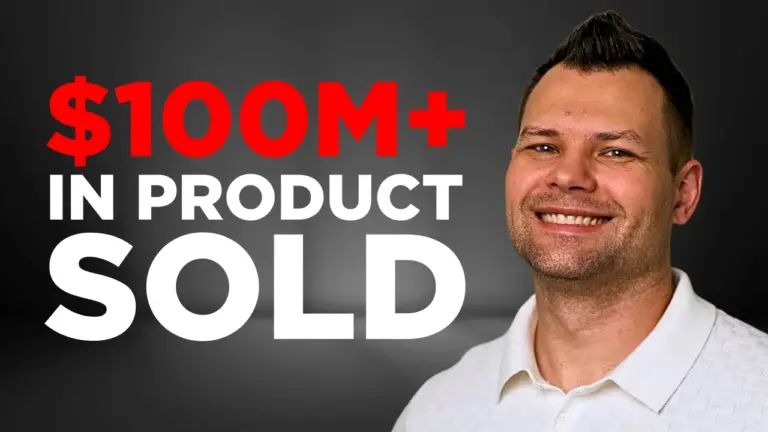Introduction
If your ads aren’t converting, you’re probably overlooking one of these 5 proven angles. Which, by the way, aren’t just quick tricks. These are psychological levers that have worked across 200+ DTC brands, helping our clients move over $100 million in product sales.
In this article, I’ll break them down and show you exactly how you can use each of these ad angles to get you more conversions and scale up your brand.

1: The Outcome-Driven Angle
What I see many brands do is waste way too much air time and consequently – money, talking about features, like “our lotion is infused with hyaluronic acid,” or “we use titanium-dioxide-coated tablets.” Oof – did I even get this right?
But, I bet you as a shopper, don’t actually care how many botanicals are in your formula or the color of your gummy vitamins. You probably really care about what the product does for you, right? Because you want transformation – a clear and exciting outcome that solves your problem.
Take a sleep-aid, for instance. Instead of saying, “Packed with magnesium and ashwagandha,” which just reads like a recipe, you can just say: “Fall asleep in just eight minutes, even on your most stressed nights.” See how this is a more specific, real benefit? You want to paint a picture of exactly how your customer’s night can go, should they use your product.
And why does this work, you may ask? Because humans make decisions based on future benefits, not features under the hood. It’s like, I know my Porsche has an 8-cylinder engine, but what I really care about is a thrilling drive on that Friday night with my wife. Seeing her smiling and excited means everything to me.
So, what you want to do is to swap generic outcomes for something very specific. For example “deep sleep support” becomes “Finally slept through the night without taking melatonin!”
Next, give them context. Tie your outcome to a relatable situation, like: “Fall asleep in eight minutes after that 3 AM work panic.” Make that context match your customer’s real life situation – make them re-live that moment.
Or you could also balance your promise with confidence. Make it specific, then back it up. Something like: “Sleep in eight minutes or we’ll refund you.”
2: The Regret Angle
You’ll find this angle powerful because it taps into something every one of your shoppers feels, which is that little voice that says, “Should I really buy this? What if it’s a waste of money?” That’s buyer hesitation. So, the Regret Angle will help you flip that hesitation into trust.
When you hear someone saying, “I almost returned this…” or “I regret buying it, but not for the reason you think,” it instantly grabs your attention. Why? Because there’s tension. It sounds negative, but it hints at a surprise twist. That curiosity pulls people in and when it resolves with a positive outcome, it builds massive belief in your product.
But keep this in mind: this only works when it feels real. And as you probably know, nothing feels more real than user-generated content told in first person. Not scripted. Not polished. Just raw, honest moments. And you might have heard phrases like, “I didn’t expect it to work, but…” or “Honestly, I thought it was another gimmick, until…” These are the type of statements that reflect how your actual customers talk and think.
But, here’s what most DTC brands miss: this angle isn’t just about storytelling – it’s about handling objections before they stop the sale. If someone’s on the fence, you can push them over in the right direction with a relatable regret hook. Because if your target audience sees someone else having doubts, too – but ended up loving your product – they’re more likely to try it themselves.
So when you’re planning your next video ad, ask yourself: What hesitation is my buyer feeling? The way I approach this is by doing research and digging into customer reviews and ad comments. Sometimes the feedback you’ll find there would write an ad itself.
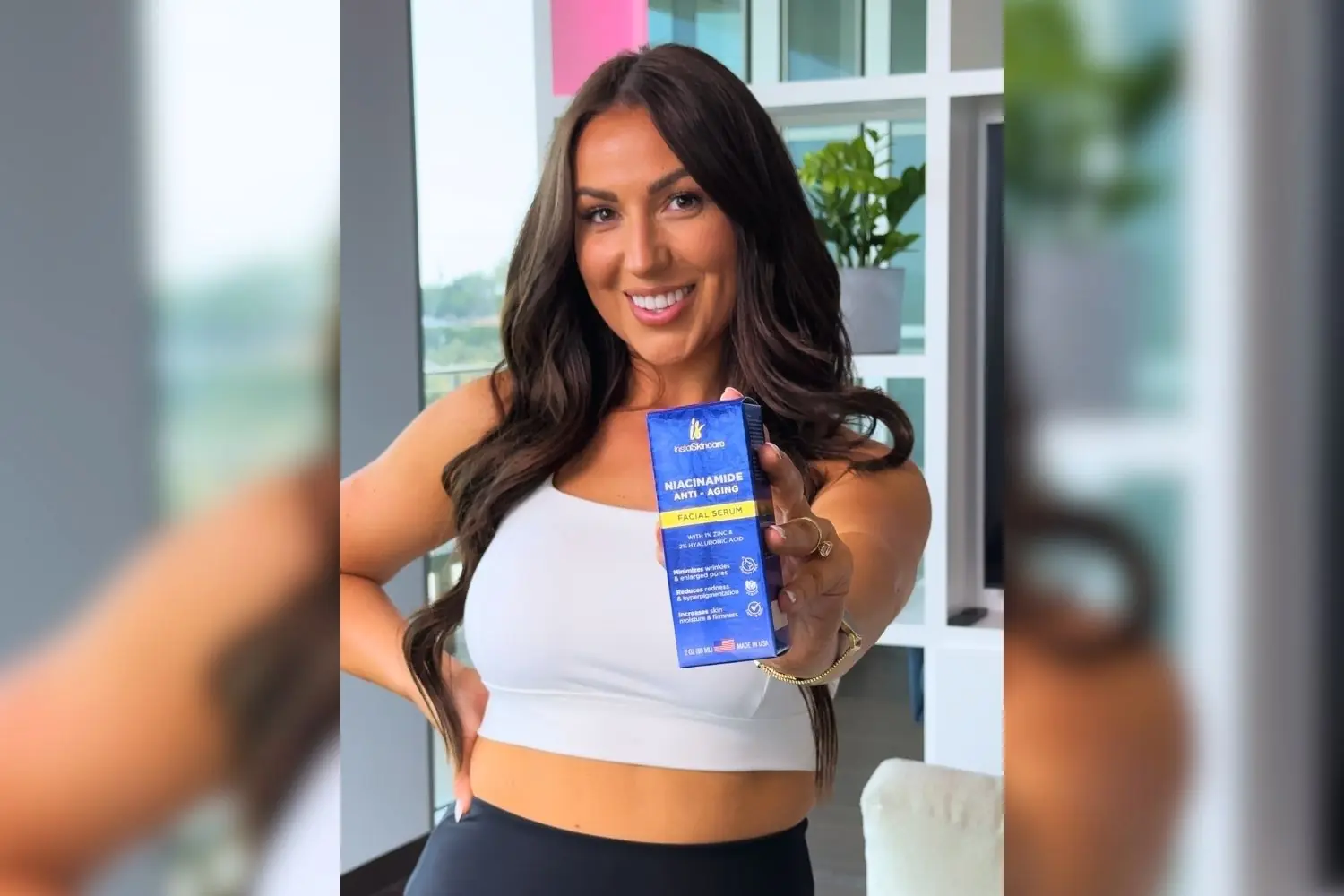
3: The “One-of-Me” POV
And this angle works because it doesn’t talk at people – it talks like them. Hey dude – suuup. Not a good afternoon, sir. Cuz, that would be weird. Anyway, your customer needs to see someone and instantly think, “Yup, that’s me.”
So, if you sell skin care products, instead of saying, “Here’s our amazing cleanser,” try: “As a mom with 3 kids under 10, I don’t have time for a 6-step skincare routine.” Or, “I’m 44, and this is what actually made my skin glow again.” You get the idea. When your messaging comes from someone living the same life, it creates an emotional shortcut to trust.
Here’s a big mistake you should avoid: which is – choosing influencers based on follower count instead of fit. Don’t chase influencers – choose creators who embody your customer’s life. Work with people who reflect your audience’s age, gender, values, daily routine – even their tone of voice. Your customer will watch and say: “This person gets me,” so they’ll be way more likely to believe your product works.
And if you’re targeting several buyer personas with that same product, build a roster of creators for these different audience segments. If you serve moms, professionals, gym-rats, or people with sensitive skin, create versions of your ad for each. It’ll feel personal to your viewers and that personalization will grow your business. As you know from marketing 101, when you target everyone, the message reaches no one.
4: The Enemy Angle
And this one taps into something deep – our natural curiosity and our desire to know the truth. People love uncovering hidden problems. It makes them feel smart. It makes them feel in control. And as a DTC brand, you can use this angle to position yourself as the brand that tells it like it is.
Think about the frustrations your customer is already feeling, but maybe can’t fully articulate. Maybe they’ve tried five different collagen powders and still don’t see results. Maybe they’ve spent hundreds on skincare that just irritated their skin.
So when you say, “The dirty secret about collagen powders,” or “Why expensive skincare rarely works on sensitive skin,” they listen. Why? Because you’re calling out the same pain they’ve experienced. You’re not selling yet – you’re merely saying, “We’ve been there too.”
When using this angle, be aware: don’t be controversial – be honest. You’re exposing a flaw in the current system, but you’re doing it with clarity, not drama. You’re pointing to a problem your customer already suspects is true and confirming it with evidence. That’s how you build trust.
The social proof you’d want to use for this angle: screenshots, statistics, ingredient lists, side-by-side comparisons. Make sure you’re actually showing the proof, not just talking about it. When you back your claims with proof, your brand moves from “just another ad” to “finally, someone who gets it.”
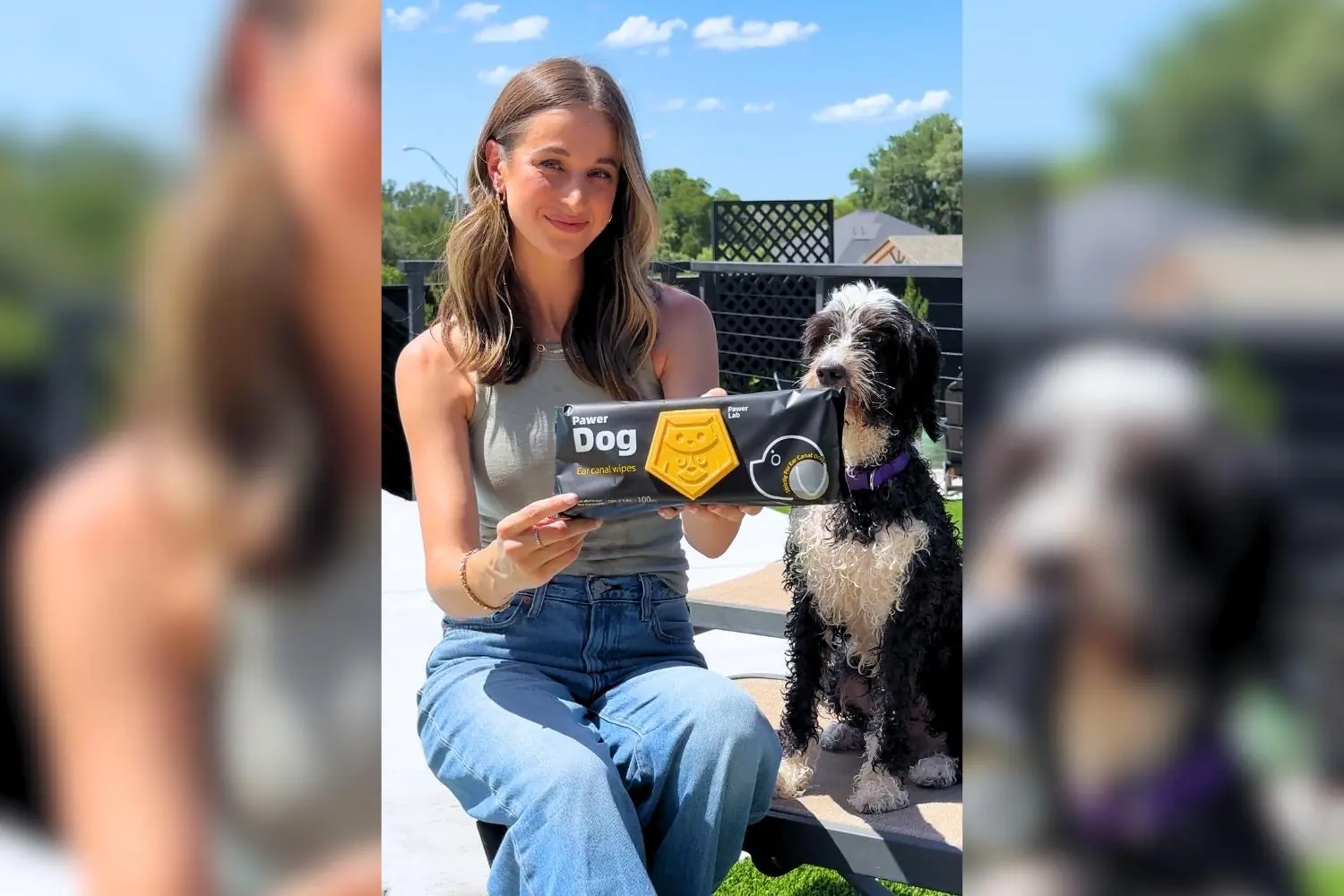
5: The Objection Killer
This one’s your closer. Okay, let’s be real – every customer has doubts. Even if they love your product idea, even if the price looks fair, even if your site has this gorgeous design… their brain is still whispering, “Yeah, but what if…?” And if you don’t kill that objection right there in the ad, you’re going to lose the sale before they ever hit checkout. Because chances are – they won’t even get that far.
So, your job is to remove friction. Make the buying decision feel so easy, so obvious, that your customer can’t help but say yes. You want to eliminate the “yeah, but” before it even forms in their head.
So how do you do that? Simple, clear, friction-free language. Think: “No subscription required.” or “Try it risk-free for 30 days.” You’re preempting the hesitation and solving the problem before they have to ask.
And here’s where it gets strategic – go mining for those 1-star, 2-star, and 3-star reviews on Amazon, your site, and for comments on platforms on which you advertise. All that feedback is your gold mine.
Now, take those objections and build your ad copy around them. If your customers hate the taste? Say, “Surprisingly good flavor – zero aftertaste.” If setup is confusing? Say, “Ready to use right out of the box. No setup. No mess.” If they worry about wasting money? “Love it or get your money back. No questions asked.” When making these statements, however, make sure the taste of your product is actually good, or it is indeed easy to put it together.
Conclusion
In the past seven years I’ve produced more than a thousand ads, from UGC clips to TV spots and I’ve learned one hard truth: sometimes the product itself, not the creative, is what isn’t working.
So, let’s make this a bonus tip: Make sure your product is actually good – because if it’s not, then there’s no video ad or offer that would help you grow your business. Because the last thing you want is to get swamped with returns.
